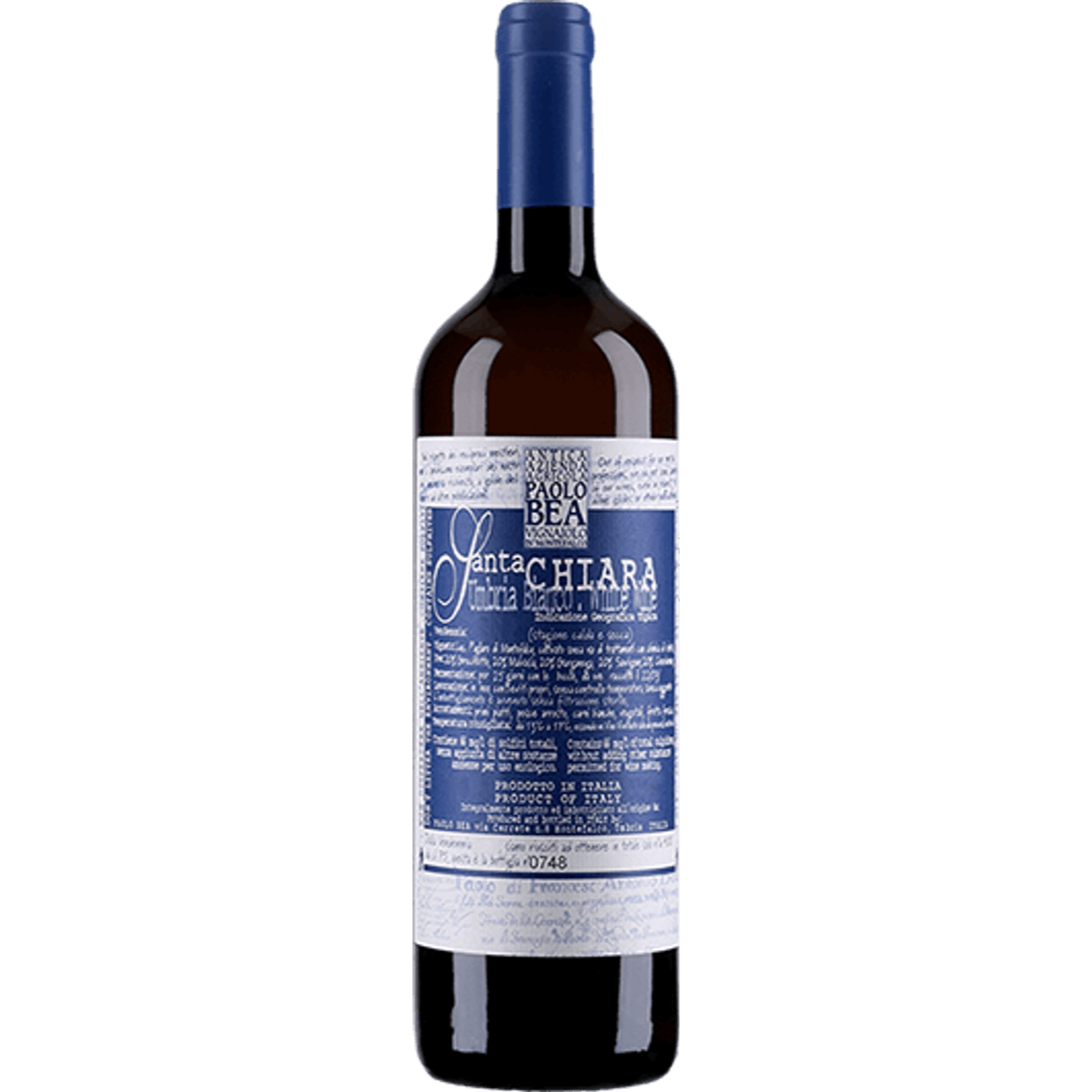Paolo Bea
"Santa Chiara" 2020
"Santa Chiara" 2020
Couldn't load pickup availability
750ml
Overview
"Santa Chiara" is a captivating skin-contact white wine from Paolo Bea, blending five indigenous Umbrian grape varieties into a rich and expressive orange wine. This traditional field blend embodies Bea’s natural winemaking philosophy, resulting in a deeply textured and complex wine with remarkable depth and structure. The 2020 vintage highlights the balance between ripe orchard fruit, herbal complexity, and a pronounced tannic structure, making it a standout expression of macerated white wines from Umbria.
Vinification and Aging
- Fermentation: Spontaneous fermentation with native yeasts in stainless steel tanks.
- Maceration: Extended skin contact for approximately 25–35 days, allowing for full extraction of color, tannins, and aromatic compounds.
- Aging: Aged for over a year in stainless steel and large neutral oak barrels, followed by bottle aging before release.
Tasting Notes
- Appearance: Deep golden amber with brilliant clarity.
- Aroma: Aromatically intense, offering notes of dried apricot, orange peel, white flowers, wild honey, almonds, and subtle oxidative nuances.
- Palate: Rich and structured, with flavors of ripe pear, candied citrus, chamomile, and savory herbal undertones. The extended skin contact provides a firm tannic grip, balanced by vibrant acidity and a lingering saline minerality.
- Finish: Long and evolving, with persistent notes of dried fruit, spice, and a touch of nutty complexity.
Food Pairing
Pairs beautifully with roasted poultry, saffron-infused risottos, aged cheeses, and Middle Eastern dishes featuring aromatic spices and nuts.
Serving Recommendations
- Serving Temperature: 12–14°C (54–57°F) to highlight its intricate aromatics and structure.
- Decanting: Recommended for 30–60 minutes to allow the wine’s depth and complexity to unfold.
Aging Potential
"Santa Chiara" can evolve gracefully over the next 8–12 years, developing additional complexity, refined oxidative notes, and a softer tannic structure.
Share


